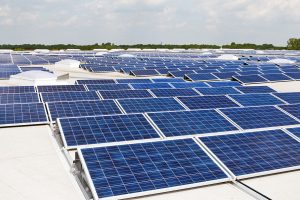Hello, Internet.

So so my class recently attended the BC Tech Summit– a summit where people from different area say of technology in BC both presented onstage and showcased pieces of technology such as robots, 3D scanners, and computer programs.
We saw several presenters, two of which I took notes on and did some background research about.
The first presenter we saw, and the first one I took notes on, was Brent Bushnell, the CEO of Two Bit Circus.

Two Bit Circus is a company that uses technology to provide innovative entertainment. They’re based in Los Angeles, but tour around the world. They’ve created things such as the equivalent of a carnival dunk tank with fire instead of water, a cloud that rains tequila, and a robot bartender. Other than Bushnell, their core team consists of Eric Gradman, Kim Schaefer, and Nancy Bennett.
These were my notes on Bushnells’s talk:
– LASER BEAMS
– “It’s hard to be like ‘what do you do for work’ but it’s easy to be like ‘I’m gonna kill you next time!!'”
– Rock band
– Whack-a-mole meets twister
– The Okay Go video that everyone has seen that’s cool!
– Nice bow tie
– Chevy car launch (literal)
– Two Bit Circus
– Race Car VR
– Olympics VR
– Tequila cloud
– Ikigai
– Grand Challenges
– Sustainability Development Goals
– Goal: that sequence from the Lego Movie
– Ayyy a hello world thing
– Bop It was meant to be a remote control
– Make > read
– STEM
– 3D printed dress w/ ink dripping and motion sensor attacks
– STEAM (STEM + art)
– STEAM carnival
– YEET FLAMBE
– “Home, alone, on average depressed”
– Prescription video games
– Escape games
– Sugarcoated vegetables actually don’t sound good but sure
– “Specialization is for insects”
– Conference crashing
– Getting on a bus –> travelling on $5 a day
– Random input
– Inspire invention
– Stimulating environment
– Secret Nerd Night (it’s like Fight Club for nerds)
– Cross disciplinary
– Intermediate Impossibles (Monty Python guy)
– Mentorship
– Hyper reality
– Intense dragon simulator
The other presenter I took notes on was Valerie Song, the CEO of a company called Ava. Ava uses technology to allow people to grow their own food, year round and indoors. Their goal is to not only revolutionize farming technology but also to allow people to grow some of their own food as a second option to buying that food as groceries. Ava uses a product called Byte, which allows plants to grow easily, without much soil.

These were my notes from Song’s presentation:
– CEO/cofounder of Ava
– Help grow plants w/ robots
– One-time corporate worker
– Entrepreneur
– Solving a problem
– Fireside chat
– Female entrepreneurs
– Parents were entrepreneurs but didn’t encourage it
– Glam vs non glam
– Manage finance
– Stay timely
– Emails
– Lot of time
– Pitching to VCs
– Getting money
– Doing interviews
– First getting money offered
– Pushing through difficult scenarios
– Loneliness
– Independent decisions
– Getting mentorship
– Mentorship program
– Don’t make the same failures as someone else
– “Play” more
– Have hobbies
– Do video games (zombies?)
– Create stuff
– Pick up skills everywhere not just in education
There was also a section of the summit focused on promoting tech-related post secondary education around BC. While I don’t have plans to go to school for anything tech related, I do have an interest in programming , so I looked into a programming program offered by BCIT. It teaches applied software development via languages such as JavaScript, C#, C++, and Swift. It provides skills in “IT systems analysis, requirements discovery, critical thinking, process mapping, documentation, technical communication, presentations, and team work”, a skill set which ranges from very software-specific to generally useful in any part of life. The program also acts as a prerequisite to various more advanced programs offered by BCIT.
I was also able to meet some people who worked in the tech industry, including getting an interview with a Microsoft Engineer.
Toodles!



















